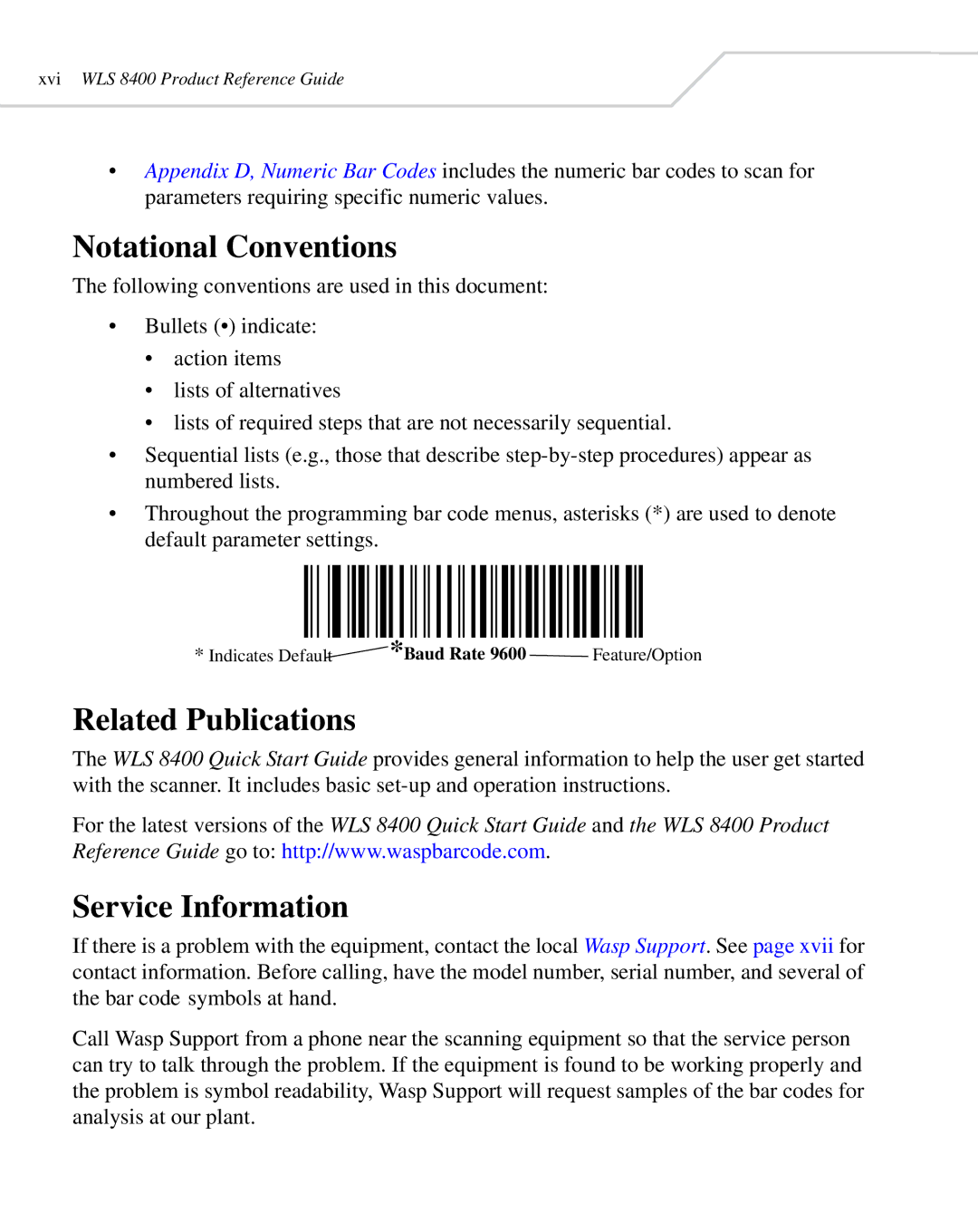
xviWLS 8400 Product Reference Guide
•Appendix D, Numeric Bar Codes includes the numeric bar codes to scan for parameters requiring specific numeric values.
Notational Conventions
The following conventions are used in this document:
•Bullets (•) indicate:
•action items
•lists of alternatives
•lists of required steps that are not necessarily sequential.
•Sequential lists (e.g., those that describe
•Throughout the programming bar code menus, asterisks (*) are used to denote default parameter settings.
|
|
|
|
|
|
|
|
|
|
|
|
|
|
|
|
|
|
|
|
|
|
|
|
|
|
|
|
|
|
|
|
|
|
|
|
|
|
|
|
|
|
|
|
|
|
|
|
|
|
|
|
|
|
|
|
|
|
* Indicates Default |
|
|
|
|
|
| * | Baud Rate 9600 |
|
|
|
|
|
|
|
|
|
| Feature/Option | ||||||||||||||||||||||||||||||||||||||
Related Publications
The WLS 8400 Quick Start Guide provides general information to help the user get started with the scanner. It includes basic
For the latest versions of the WLS 8400 Quick Start Guide and the WLS 8400 Product Reference Guide go to: http://www.waspbarcode.com.
Service Information
If there is a problem with the equipment, contact the local Wasp Support. See page xvii for contact information. Before calling, have the model number, serial number, and several of the bar code symbols at hand.
Call Wasp Support from a phone near the scanning equipment so that the service person can try to talk through the problem. If the equipment is found to be working properly and the problem is symbol readability, Wasp Support will request samples of the bar codes for analysis at our plant.
